In the early 17th century, Galileo revolutionized the study of astronomy by enhancing the existing telescope and directing it towards the sky. It was one of Galileo’s acquaintances who coined the term telescope, which signifies “far-seeing.”
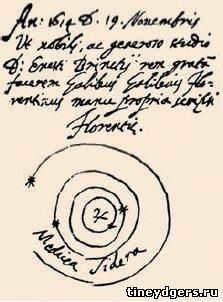
Illustration 160. Page from the manuscript of Galileo documenting his observations of the moons of Jupiter
In the early 17th century, Galileo embarked on a systematic study of the cosmos, regularly observing celestial bodies with a telescope that he rapidly improved, increasing its magnification from 3 to 32 times. These groundbreaking observations provided valuable insights into the nature of the extraterrestrial realm.
Therefore, Galileo made the groundbreaking revelation that the Moon, much like our own planet, possesses a diverse topography and is adorned with majestic mountains and awe-inspiring craters. In addition to this extraordinary finding, Galileo also made significant contributions to our understanding of the solar system. He identified four orbiting satellites of Jupiter (see Fig. 160), observed intriguing sunspots, determined that the Sun rotates on its axis, and meticulously calculated the duration of this celestial revolution. Galileo’s remarkable telescope, although relatively uncomplicated, paved the way for future discoveries. To further explore the far reaches of the Universe, innovative instruments and novel research methodologies had to be devised. Initially, telescopes only permitted observations of objects in space that emitted or reflected electromagnetic radiation within the visible portion of the spectrum, as other forms of radiation were absorbed by Earth’s atmosphere.
Radio telescope.
In 1931, Carl Jansky, an astronomer from the United States, made a groundbreaking discovery when he detected the presence of short radio waves emanating from the heart of our galaxy. This remarkable finding paved the way for the development of the first-ever radio telescope in 1937, heralding the birth of a revolutionary field of study known as radio astronomy. In the aftermath of World War II, there were considerable advancements made in the design and construction of radio telescopes, resulting in significant improvements in their capabilities (Fig. 161).
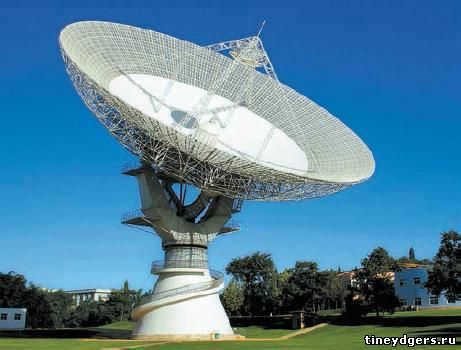
Figure 161. State-of-the-art radio telescope
A radio telescope is composed of an antenna that detects waves emanating from outer space, a signal amplifier, and a device that transforms invisible radio waves into visible radiation. Due to the low power of radio waves reaching Earth, the antenna needs to be sizable and the amplifier must possess high sensitivity. In contemporary radio telescopes, the surface area of the receiving antennas spans tens of thousands of square meters.
In order to potentially minimize the interference of the atmosphere with light waves, observatories, which conduct observations of celestial bodies, have sought to be positioned at higher elevations, preferably in mountainous regions. However, the most optimal conditions for such studies have emerged with the advent of artificial satellites. Telescopes installed on satellites are able to circumvent the absorption of electromagnetic radiation by the atmosphere as they operate beyond its reach. One of the most renowned of these telescopes is the Hubble apparatus, which is named after a prominent astronomer (Figure 162). “Hubble has been in orbit since 1990 and has facilitated numerous captivating astronomical observations and measurements (Fig. 163). Hubble’s intricate equipment necessitates periodic inspection and repair, which entails sending expeditions to the space station at certain intervals.
Cosmic rays.
Not only do different entities in the cosmos emit light, infrared radiation, and radio waves (Fig. 164), but they also release electromagnetic radiation at higher frequencies and streams of elementary particles, known as cosmic rays. These rays primarily comprise of protons and helium nuclei (also known as alpha particles). Their existence was first identified in the early 20th century, when radioactive radiation was detected above the Earth’s surface.
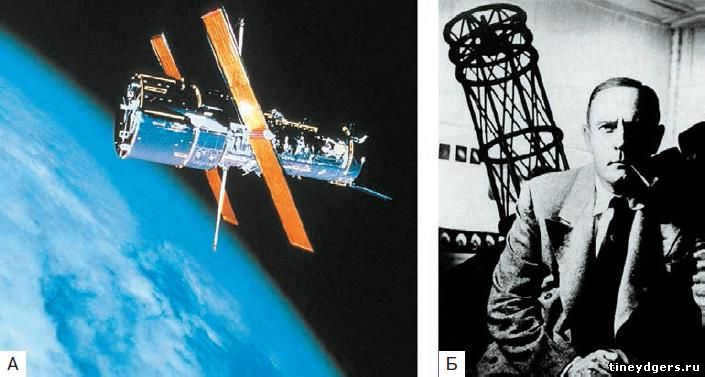
Illustration 162. The use of satellites allows for the most accurate observations: A, Hubble Space Telescope; B, Edwin Hubble, an American astronomer (1889-1953)
Initially, it was believed that this radiation originated from the Earth itself. However, it was soon discovered that its intensity does not decrease, but rather increases as the distance from the Earth’s surface increases. Consequently, cosmic rays are believed to come from external sources. These sources can include objects within our Solar System as well as much more distant locations, such as the stars within our galaxy and even beyond. Prior to the development of modern instruments, cosmic rays served as the primary means of studying elementary particles, with some of these particles being first detected through their presence within cosmic rays.
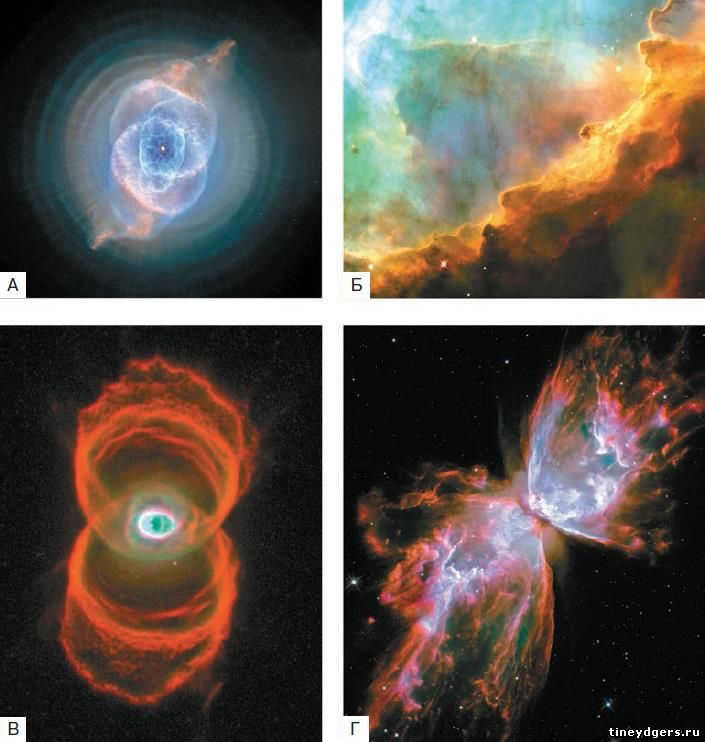
Figure 163. Nebulae captured by the Hubble Telescope: A – Cat’s Eye; B – Omega; C – Hourglass; D – Butterfly
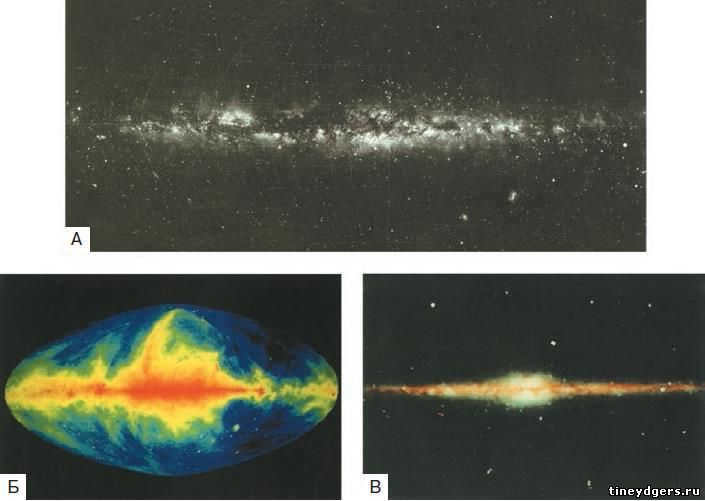
Figure 164. The night sky can be observed using different types of telescopes, such as optical (A), infrared (B), and radio (C) telescopes.
Importance of spectral analysis.
Spectral analysis plays a crucial role in the study of planets, stars, and other celestial objects (§ 42). By analyzing the emission and absorption spectra of these objects, scientists can accurately determine their chemical composition and temperature. It has been observed that as the temperature of an object increases, its radiation shifts towards the shorter wavelengths of the spectrum. This is why the coolest stars appear red and the hottest stars appear blue, as mentioned in previous chapters.
The measurements of the cosmos.
Extensive research spanning countless years has provided humanity with a glimpse into the structure of the Universe and its celestial entities, while also revealing the position our Earth holds within it. The vast distances that separate stars and galaxies, along with the incredible velocities at which cosmic objects move, have led to the realization that the Universe possesses unique attributes not encountered in our everyday lives. Hence, this realm has been bestowed with the distinct appellation of megamir, signifying the grand world.
Estimating the size of this world using conventional units of measurement, such as kilometers, is challenging. The numbers that we would obtain would be so enormous that it would be incredibly difficult to comprehend and compare them. For relatively small distances, the units of distance in the megamir are the astronomical unit, and for very large distances, the light-year. The astronomical unit represents the average distance from the Earth to the Sun, which is approximately 149,600,000 km. On the other hand, a light-year is the distance that light travels during a year. By knowing that the speed of light is 300,000 km/s and a year has 31,536,000 s, we can easily calculate that one light-year is equal to 9.46 x 10^12 km, i.e., 9,500,000,000,000,000 km! In some cases, astronomers use a unit called a parsec to measure astronomical distances, which is roughly three times the length of a light-year and equals 3.1 x 10^13 km.
The available data on the magnitude of the Universe suggests that we are dealing with an incredibly vast realm, completely incomparable to anything we are accustomed to. The most advanced telescopes in existence have the ability to observe objects that are located 28 billion light-years away from us, equivalent to a staggering 10.23 kilometers. This implies that the diameter of the observable Universe is approximately 60 billion light-years. Recent calculations even indicate that the diameter of the Universe could extend up to an astonishing 80 billion light-years. The magnitude of these dimensions is truly mind-boggling. If we were to envision the diameter of the Universe as the diameter of a globe, the size of our solar system would be comparable to that of a tiny bacterium.
However, despite its relatively modest proportions, the Solar System, and particularly the Earth, hold immense significance for humanity as they are considered our very cradle, as expressed by Tsiolkovsky.
Assess your understanding
1. What were the astronomical findings made by Galileo?
2. What is the reason behind choosing high elevations as the ideal spot for observatories?
3. What substances constitute cosmic rays?
4. Which scientific approach can be utilized to ascertain the temperature and chemical makeup of celestial objects?
Tasks
1. The distance between Earth and Sirius is 8.6 light-years. What is the separation in kilometers between us and Sirius? Calculate the distance from our planet to Sirius in astronomical units and parsecs.
2. Create a report or presentation on the topic and the advancement of radio astronomy.
The term astronomy is derived from the Greek language (astron – star, nomos – law), signifying a discipline focused on the study of celestial laws. It is now widely recognized that in addition to stars (Fig. 1.1), the Universe encompasses a multitude of other cosmic entities and their complex arrangements – planets, asteroids, comets, galaxies, nebulae. Consequently, astronomers investigate all celestial objects beyond our planet and their interplay with one another. The Greek word cosmos translates to “order,” contrasting with chaos, which denotes disorder. Thus, ancient Greek scholars comprehended the existence of universal laws, suggesting a certain structure in the heavens. In contemporary times, the term cosmos represents the entirety of the universe. Present-day astronomy employs various methodologies to explore the cosmos. Astronomers not only gather data about remote worlds by scrutinizing the radiation received from space at the Earth’s surface, but also conduct experiments in nearby and far-flung outer space.
| The cosmos in the wider sense of the term – encompasses everything on our planet and in the vast expanse of space. |
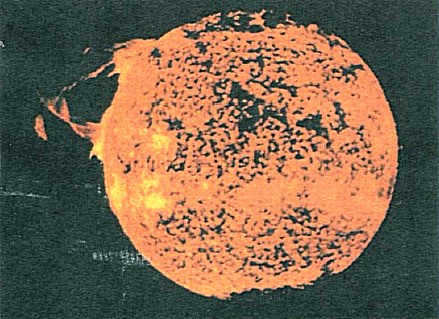
Figure 1.1. A star is a massive hot celestial body that emits light and has an internal energy source. (Photograph of the Sun)
A concise history of astronomy
Throughout history, the enigmatic sky has captivated the human imagination, yet remained largely unexplored and therefore revered. The human mind filled the heavens with gods, who governed the world and determined the fate of each individual. During the night, the ethereal radiance of the stars held people in a trance, prompting ancient astronomers to group individual stars into patterns resembling humans and animals – thus giving birth to the constellations. Subsequently, the wandering luminaries among the stars were discovered and named planets (derived from the Greek word for “wandering”; Fig. 1.2).
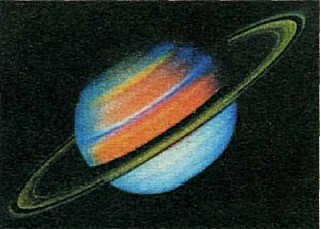
Figure 1.2: Stars are much hotter than planets and they emit their own light, while planets orbit around stars and reflect their light.
Ancient Egypt and ancient Greece were the first civilizations to make attempts to explain the enigmatic phenomena of the universe. More than 4000 years ago, Egyptian priests created the earliest star maps (Figure 1.3) and gave names to the planets.


Fig. 1.3. A segment of an ancient celestial map. The monster Whale claimed Princess Andromeda as its sacrifice. Perseus saved her by beheading Medusa Gorgon, whose gaze could turn anyone to stone.
In the 6th century B.C., the eminent ancient Greek philosopher and mathematician Pythagoras proposed the concept that the Earth is spherical and floats freely in space without any support. In the 2nd century BC, the astronomer Hipparchus determined the Earth-Moon distance and observed the phenomenon of Earth’s axial precession.

Figure 1.4. Ptolemy (90-160)
In the 2nd century AD, the ancient Greek philosopher Claudius Ptolemy (Figure 1.4) devised a geocentric model of the universe, with the Earth positioned at the center. Surrounding the Earth in space are eight spheres, on which the Moon, the Sun, and the five known planets at the time – Mercury, Venus, Mars, Jupiter, and Saturn – are situated (Fig. 1.5).
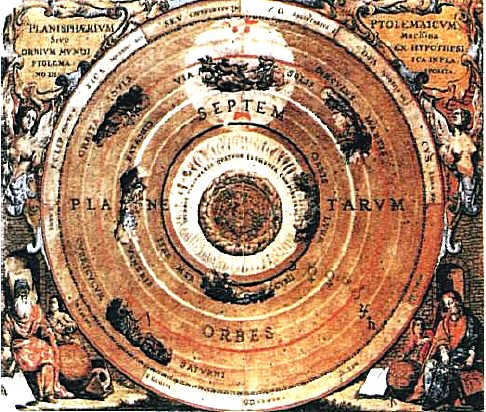
Figure 1.5 shows the geocentric model of the world system, where the Earth is positioned at the center and all other celestial bodies revolve around it. This ancient engraving from the 17th century depicts this concept.
Within this model, the stars are located in the 8th sphere, interconnected and moving around the Earth as a whole. However, in the 16th century, an astronomer named Nicolaus Copernicus (depicted in Figure 1.6) proposed a heliocentric system of the world. In this system, the Sun is positioned at the center, and the Earth and other planets orbit around it in circular paths (as shown in Figure 1.7).

Figure 1.6. N. Copernicus (1473-1543)
By challenging the traditional belief that Earth was the center of the universe, Copernicus revolutionized our understanding of the cosmos. His groundbreaking discovery of the heliocentric system revealed that the same laws govern both our planet and the vastness of space.
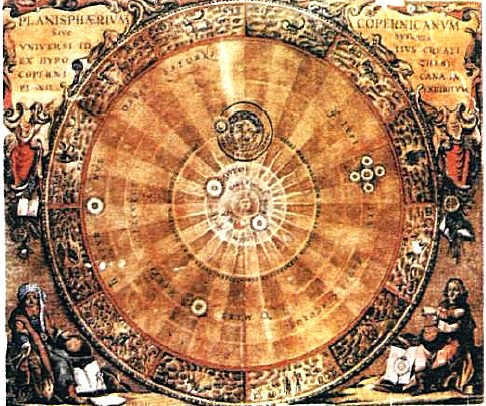
Figure 1.7 displays the heliocentric model of the universe, with the Sun positioned at the center. The Earth, alongside the other planets, orbits around it. (Engraving.)
In 1609, the renowned Italian physicist Galileo Galilei (Figure 1.8) became the first person to utilize a telescope for observing the celestial bodies. He made groundbreaking discoveries, such as identifying Jupiter’s satellites and observing the stars within the Milky Way.
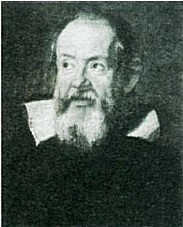
Figure 1.8. G. Galileo (1564-1642)
The 18th century in the field of astronomy is commonly associated with the renowned English scientist, Isaac Newton (Fig. 1.9). Newton made a groundbreaking discovery during this time, uncovering the law of universal gravitation. Newton’s contribution lies in his ability to demonstrate the universality of the gravitational force. This means that the same force that causes an apple to fall to the Earth also affects the Moon as it orbits around the Earth. The gravitational force not only governs the movements of stars and galaxies but also plays a significant role in shaping the overall evolution of the universe.
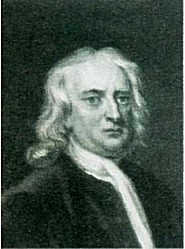
Figure 1.9. I. Newton (1643-1727)
During the 19th century, a new era of exploring the universe commenced with the discovery of absorption lines in the Sun’s spectrum by the German physicist Joseph Fraunhofer in 1814 – known as Fraunhofer lines (Fig. 1.10). Subsequently, absorption lines were detected in the spectra of other stars. Astronomers utilize these spectra to determine the chemical composition, temperature, and even the velocity of celestial bodies.
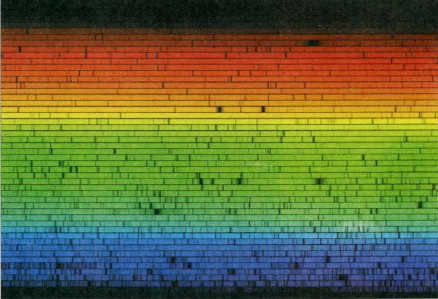
Figure 1.10: The Spectrum of the Sun shows dark absorption lines formed in the atmospheres of both Earth and the Sun.
In the 20th century, the brilliant German physicist Albert Einstein revolutionized our understanding of the universe with his groundbreaking general theory of relativity. This theory provided astronomers with a key insight into the peculiar phenomenon of the red shift of absorption lines observed in the spectra of distant galaxies. American astronomer Edwin Hubble first discovered this red shift in 1929, and his work proved that galaxies were in fact moving away from each other. Building on Hubble’s findings, scientists developed a comprehensive theory of the universe’s evolution from its inception to the present day. This momentous discovery gave birth to a new field of study: cosmology.
The commencement of cosmonautics took place on October 4, 1957. It was on this particular day when the Soviet Union successfully launched the very first man-made satellite, known as Earth satellite (Fig. 1.11), with the involvement of Ukrainian scientists. At present, numerous automated stations navigate through space, investigating not only the vicinity of Earth but also other planets within the Solar System.
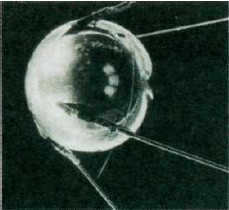
Fig. 1.11. The World's First Artificial Earth Satellite (USSR)
Our cosmic location
We reside on Earth, which is one of the celestial bodies in the Solar System. These celestial bodies revolve around the Sun in their respective orbits. With the exception of Venus and Mercury, most celestial bodies have natural satellites that orbit around them. Apart from the Sun and the celestial bodies with satellites, the Solar System also encompasses hundreds of thousands of asteroids, which are essentially miniature planets, millions of cometary nuclei, and meteoric materials. In relation to the Sun, the celestial bodies are arranged in the following sequence: the closest is Mercury, followed by Venus, Earth, Mars, Jupiter, Saturn, Uranus, and Neptune (Fig. 1.12).
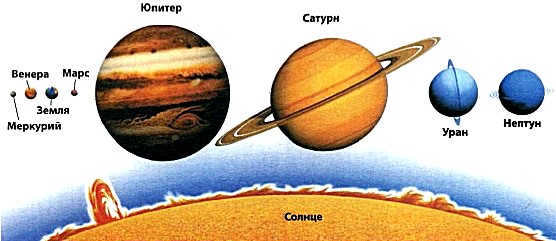
Figure 1.12: The sizes of the Sun and the planets in the solar system are shown relative to each other. The Earth has an average radius of 6370 km
- The Sun is classified as a star and is represented by the number 1
- There are a total of 8 planets in the solar system
- In addition to the planets, there are 3 dwarf planets
- There are over 150 companion planets
- There are over 500,000 asteroids
- There are over 1,000,000 comets
- There is also meteoric matter
Behind Neptune, there are thousands of small planets orbiting the Sun that are not well-illuminated by its rays.
The distances in outer space are so vast that measuring them in kilometers is inconvenient, which is why astronomers use the following units of measurement: the astronomical unit and the light-year.
Outside the confines of our solar system, at a distance exceeding 100,000 astronomical units, lies the realm where the gravitational pull of other stars begins to take hold. With the naked eye, we can behold approximately 6,000 stars that grace the heavens, collectively forming 88 distinct constellations. However, the actual number of stars is significantly greater, although their faint luminosity necessitates the aid of a telescope for observation. Vast conglomerations of stars, bound together by the force of gravity, are known as galaxies. Within the boundless expanse of the Universe, billions of galaxies exist, including our very own Galaxy, commonly referred to as the Milky Way or Chumaci Shliach. When we gaze upon the night sky, we perceive our Galaxy as a glistening streak of silver (refer to Figure 1.13). Our Galaxy, derived from the Greek term for “Milky Way,” is an immense system boasting a staggering 400 billion stars that orbit around its central core. These stars, ranging in temperature, are arranged in a disk-like structure adorned with spiraling arms.
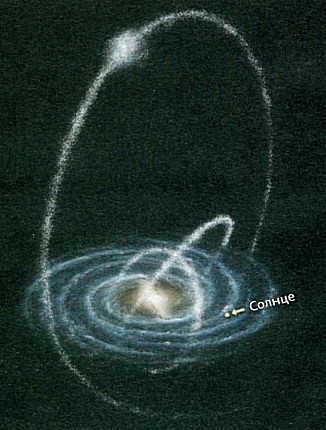

Figure 1.13. The Milky Way Galaxy. The diameter of the main part of the disk is 100,000 light years, and the distance from the Sun to the center of the Galaxy is 25,000 light years
The Andromeda Nebula is one of the other galaxies visible to the naked eye. It resembles our Galaxy in size and shape, and it takes light from the Andromeda Nebula 2.3 million years to reach Earth, meaning its distance is 2.3 million light years. Galaxies are organized in clusters and form the cellular structure of the Universe.
The most distant celestial objects that can still be observed with modern telescopes are quasars (see § 15). They are located at a distance of 10 billion light years from Earth.
A light-year is the measurement of the distance that light travels within the span of one year, moving at a speed of 300,000 km/sec.
If, at some point in the future, inhabitants of Earth desire to communicate with extraterrestrial civilizations, our spatial location can be denoted as follows: planet Earth, Solar System, Galaxy, Universe (Figure 1.14).
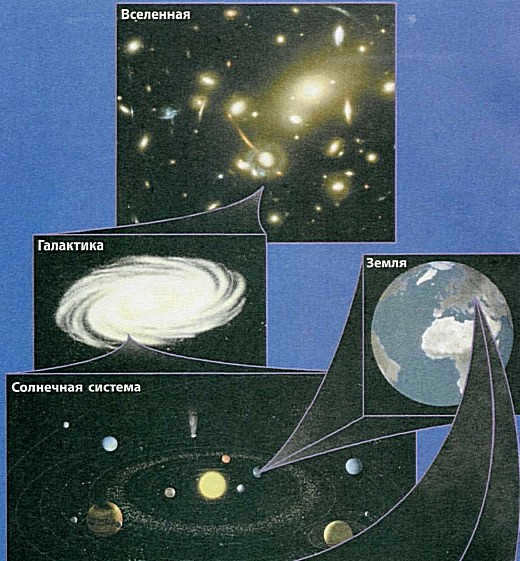
Fig. 1.14. Our cosmic address
The Universe contains approximately 10 billion galaxies. If each galaxy contains an average of 1011 stars, then the total number of stars in the Universe amounts to a staggering 1021. This astronomical figure with 21 zeros is quite challenging to comprehend, so here’s a helpful comparison. If we were to divide all the stars in the Universe by the number of people on Earth, each person would possess one galaxy, which is roughly equivalent to 200 billion stars.
The primary categories of astronomy
Astronomy is a highly diversified field, with its advancement closely tied to scientific and technological progress. It is segmented into distinct branches, each utilizing unique research methods and tools.
- What are the origins of our world and why does it appear as it does today?
- How did life originate on Earth and is there life elsewhere in the Universe?
- What does the future hold for our universe?
Celestial mechanics is the discipline within astronomy that examines the laws governing the motion of celestial bodies.
Astrophysics is a branch of astronomy that investigates the properties of cosmic objects, including their structure, chemical composition, and physical characteristics.
For the inquisitive
Findings
The field of astronomy is dedicated to the study of various celestial bodies and their interactions within the universe. Over the course of the past millennium, our understanding of the cosmos has undergone significant transformations – from Ptolemy’s geocentric model with celestial spheres surrounding the Earth to our current awe-inspiring portrayal of the infinite expanse. Astronomy shares a close connection with other natural sciences, including physics, chemistry, mathematics, biology, and philosophy, as the same fundamental laws govern both earthly and celestial phenomena. Within our ever-changing universe, nothing is permanent – stars and planets are born and explode, civilizations rise and fall. Yet, one question remains perpetual: “Why does the universe exist, and why are we inhabitants of this peculiar world?”.
Examinations
- Which celestial body is positioned at the core of the geocentric model of the universe?
- A. The Sun.
B. Jupiter.
C. Saturn.
D. Earth.
E. Venus. - Which planet was identified by Copernicus?
- A. Mars.
B. Saturn.
C. Uranus.
D. Earth.
E. Jupiter. - What is quantified in terms of light years?
- A. Time.
B. Distance to the planets.
C. The period of revolution.
D. Distance to the stars.
E. Distance to the Earth. - How is the Greek term for “planet” interpreted?
- A. A star with hair.
B. A star with a tail.
C. The wandering star.
D. A cloud.
E. A frigid body. - What is the structure of our Milky Way?
- A. Elliptical.
B. Spiral.
C. Irregular.
D. Globular.
E. Cylindrical. - What are the distinctions between the geocentric and heliocentric models of the universe?
- What is the arrangement of the planets in relation to the Sun in our solar system?
- Is it possible for there to be celestial bodies beyond the orbit of Neptune?
- What is the unit of measurement used in astronomy?
- Calculate the approximate distance (rounded to the nearest kilometer) of 1 light-year in kilometers.
- Calculate the time it takes for light to travel from the Sun to Earth, Neptune, and the boundaries of the solar system. Assume the speed of light is 300,000 km/s.
- Independently, locate the prominent stars in the sky that are labeled on the star map. Sketch the prominent stars visible above your head. Compare your sketches with the star map. Which constellations do these stars belong to?
- Spot an unlabeled bright star on the star chart. It might be a planet or a newly discovered star!
Key ideas and terms:
Astronomical unit, astrophysics, galaxy, heliocentric model, geocentric model, star, celestial mechanics, planet, light year.

Feel free to post your thoughts and inquiries regarding the paragraph in the comment section.
Gadgets and equipment for examining celestial bodies [ edit correct code ].
Breakthroughs achieved by researchers utilizing the telescope [ edit correct code ].
The invention of the telescope played a significant role in the comprehension of the Earth’s position within the solar system and in space as a whole. Historical records indicate that the principles of telescopes were already known by the late 16th century, however, the first functional telescope, or rather a compound telescope, was developed in the Netherlands in 1608. Hans Lippershee, Zacharias Janssen, and Jacob Metius, who were all involved in the production of eyeglasses, independently created the world’s inaugural telescopes. The development of the telescope was a result of technological advancements in the production of spectacles and the progress made in the field of optics, with contributions from Roger Bacon and several Islamic scholars, including Al-Kindi (c. 801-873), Ibn Sahl (c. 940-1000), and Ibn al-Haysam (965-1040).
The tale of Galileo’s use of the telescope illustrates the transformative power of his observations on our understanding of the universe and our place within it. Following his initial studies of the heavens through the lens of a telescope, Galileo meticulously recorded his findings. These observations, coupled with his insightful interpretations of the stars, the Moon, Jupiter, the Sun, and the phases of Venus, proved pivotal in unraveling the mysteries of the cosmos. In March 1610, Galileo disseminated the inaugural outcomes of his telescopic explorations in the Sidereus Nuncius (Starry Messenger), a concise yet influential treatise that rapidly disseminated throughout the scientific community.
Exploration of the Lunar Surface [edit edit code]
Engravings depicting the Moon, crafted from Galileo’s meticulous drawings, provided the general public with an entirely new perspective of the Moon. By closely observing the Moon, Galileo deduced that it possessed mountains and a surface adorned with craters. Through his sketches, he even made estimates regarding their height and depth. These observations, which were only achievable through the use of magnification, unambiguously debunked the Aristotelian notion of the Moon as a translucent flawless sphere (or, as Dante suggested, an “eternal pearl”). The Moon was no longer an immaculate celestial entity; it now clearly displayed distinct features and topography akin to that of the Earth.
Observing Jupiter [edit edit code]
Upon observing Jupiter through his telescope, Galileo was able to determine that the planet had its own satellites. After closely studying Jupiter for several days, Galileo made the groundbreaking discovery that what was once believed to be fixed stars were actually satellites orbiting the planet. As a result, Galileo is credited with the discovery of the three largest satellites of Jupiter.
Edwin Hubble’s groundbreaking discoveries [ edit edit code ]
Edwin Hubble revolutionized our understanding of the universe by providing evidence for the existence of other galaxies outside of our own Milky Way. Using the powerful Hooker telescope, Hubble captured photographs that revealed the presence of these distant galaxies. Additionally, Hubble conducted a detailed analysis of the luminosity levels of various stars, which helped him in his groundbreaking research.
At the time, scientists had limited knowledge about the size of the Milky Way. However, Hubble’s meticulous investigations allowed him to estimate that the Andromeda galaxy, previously believed to be a mere nebula within the Milky Way, was actually located approximately 900,000 light-years away from our galaxy. This finding was a game-changer, as it demonstrated that Andromeda was, in fact, an independent galaxy.
Subsequent research has shown that the distance to the Andromeda Galaxy is even greater than Hubble initially estimated. It is now understood to be around 2.48 million light-years away from the Milky Way. As a result of Hubble’s groundbreaking work, the Andromeda Nebula was officially renamed the Andromeda Galaxy, solidifying its status as a distinct and separate entity within the universe.
Following findings using the Hubble Telescope [ edit edit code ]
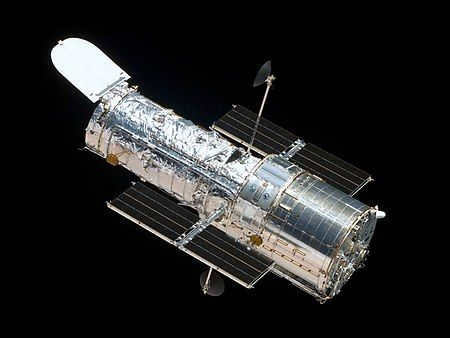
In the 20th century, there were significant technological advancements, resulting in the initiation of ambitious space exploration projects. As a result, in 1990, NASA and the European Space Agency collaborated on an international endeavor to launch the Hubble telescope.
The Hubble Space Telescope is a telescope situated in outer space, orbiting the Earth. It was deployed into orbit by the space shuttle Discovery on April 24, 1990. Hubble currently orbits approximately 547 kilometers above Earth and has dimensions similar to that of a school bus, weighing 11 tons. The telescope operates using solar energy.
Hubble captures high-resolution, wide-angle photographs of celestial bodies within the cosmos, including planets, stars, nebulae, and galaxies. Over the course of its existence, the telescope has amassed over a million data points, providing intricate depictions of stellar birth and demise, as well as galaxies situated billions of light years from Earth. This vast collection of information has significantly contributed to our understanding of the universe’s history and evolution.
Significant findings made by the Hubble Telescope [ edit edit code ]

Scientists have been able to estimate the age and size of the universe with the help of photographs captured by the Hubble telescope. According to scientific research, the Universe is believed to be approximately 14 billion years old. The Hubble telescope has played a crucial role in deepening our understanding of the formation of planets and galaxies. In fact, the telescope has provided us with remarkable images known as the Hubble Ultra Deep Field, which showcase the most distant galaxies ever observed by humans. It is estimated that these galaxies are located at a distance of 12 billion years from Earth.
Additionally, the Hubble telescope has been instrumental in advancing our knowledge about the formation of stars, galaxies, and nebulae. Furthermore, it has also allowed scientists to uncover intricate details about gamma-ray bursts, which are highly energetic outbursts that occur when massive stars explode.
Moreover, the Hubble telescope is regularly employed in the study of the atmospheres of exoplanets that orbit stars similar to our Sun.
Astronomical Tools [ edit correct code ]
- Enumerate the astronomical tools you are familiar with
- Alidada – (Arabic al-hada) – (Late Latin alidada, from Arabic al-idada – ruler) a component of astronomical and geodetic angular measuring instruments (see fig.), rotating around an axis passing through the center of the Limb. Using two Verniers or microscopes positioned at opposite ends of the A., the angular divisions of the limb are determined. [1]
- Astrolabe – An astrolabe was a device used by ancient astronomers to measure the latitude and longitude of celestial objects. It allowed for the determination of the elevation of stars and the Sun above the Earth’s surface, and with the data obtained, it was possible to calculate location. During travel, the astrolabe served as the sole reference point for determining coordinates and time of day. In essence, the astrolabe was one of the earliest measuring instruments created by humans in ancient times. [2]
- A coronagraph (derived from the Latin word corona, meaning “crown”) is a telescope designed for observing the solar corona outside of solar eclipses. The solar corona is significantly less bright than the Sun’s disk, making it visible to the naked eye only during a total solar eclipse, when the Moon completely covers the Sun’s disk. [3]
- An inclinometer is a sensor used to measure the amount of tilt, roll, or deflection of an object relative to the force of gravity. Inclinometers are available in different types and sizes, and in this discussion, we will explore the various types of inclinometers, their functioning principles, and their applications. [4]
- Photometer – A device designed to measure various photometric quantities, such as light intensity, luminous flux, illuminance, brightness, and more. It is also capable of measuring quantities related to infrared and ultraviolet radiation, as well as determining the degree of density and light transmission. The term “photometer” is used as a general name for different instruments used to measure these photometric quantities. For example, the color of an object can be measured using colorimeters, the brightness of radiation can be measured using brightness meters, and the degree of illumination can be measured using luxmeters. [5] In the field of astronomy, a photometer is used to measure the intensity of light emitted by stars.
- A radio telescope is a device designed to receive radio emissions from celestial objects in the Solar System, our Galaxy, and the Universe. It is used to study various characteristics of these objects, such as their coordinates, spatial structure, emission intensity, spectrum, and polarization. Radio telescopes are unique among astronomical instruments in terms of the frequency range they can detect. Telescopes with higher frequencies, such as thermal, visible, ultraviolet, X-ray, and gamma-ray telescopes, are also used for studying electromagnetic radiation. [6]
- A space telescope is a type of telescope that is positioned in outer space to observe distant planets, galaxies, and other astronomical objects. One of the main advantages of space telescopes is that they are not affected by Earth’s atmosphere, which can distort observations of outer space. The most well-known example of a space telescope is the Hubble telescope (mentioned above).
- Spectrometer – A specialized optical device used to capture and analyze a spectrum of light. It employs various types of radiation (such as X-ray or laser) and detects the resulting fluorescence to obtain the analyzed spectrum. Typically, measurements of radiation intensity, wavelength, frequency, and length are taken during the analysis, although other parameters can also be determined. Spectrometers are capable of operating across a wide range of wavelengths, from gamma to infrared radiation [7]. They are instrumental in the study of starlight, providing insights into the chemical composition of stars.
- Telescope –
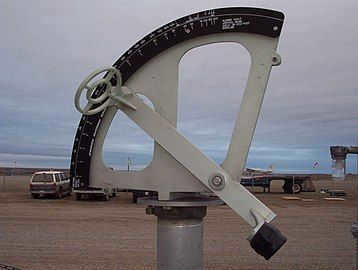
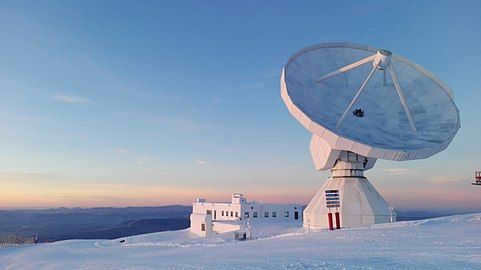
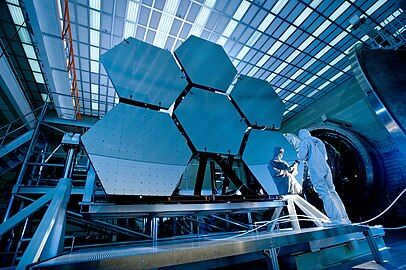
Device Diagrams and Operating Principles of Lenticular, Mirror, and Mirror-Lens Telescopes [ edit correct code ].
- Analyze the device diagrams and elucidate the operating principle behind lenticular, mirror, and mirror-lens telescopes.
A telescope is an instrument utilized by astronomers to observe distant objects in space. Curved mirrors are typically employed in most telescopes, especially large ones, to gather and concentrate light emitted by celestial bodies such as stars, planets, and comets.
In the past, the initial telescopes utilized pieces of curved transparent glass known as lenses to focus light. However, mirrors are now preferred due to their lighter weight and easier manufacturing process, ensuring a perfectly smooth surface.
The mirrors or lenses within a telescope are referred to as “optics.” Modern telescopes with enhanced capabilities can effectively capture light from extremely faint and faraway objects located millions of kilometers away or even millions of light years away. To achieve this, the optics, regardless of whether mirrors or lenses, must be of considerable size.
The telescope’s ability to collect light increases with the size of its mirrors or lenses. The shape of the optics then concentrates this light. When we peer through the telescope, it is this concentrated light that we observe.
The optics of a telescope must possess near-perfection. This entails that the mirrors and lenses must have the precise shape to concentrate the light. Any spots, scratches, or imperfections on them would result in a distorted or blurry image.
The Operating Principle of a Radio Telescope [edit code]
- Explain the operating principle of a radio telescope. What astronomical discoveries have been made using it?
The operating principle of a radio telescope is centered around receiving and analyzing radio waves and waves from other parts of the electromagnetic spectrum that originate from various sources of radiation. These sources include the Sun, planets, stars, galaxies, quasars, other celestial bodies, and even interstellar gas. The operating principle of a radio telescope differs slightly from that of a regular radio receiver, like the ones used by listeners of stations such as “Russian Radio.” It involves an antenna for signal reception, signal processing, and an output device for extracting information (in the case of a regular radio, it would be a speaker).
It is true that the speed of radio waves is the same as the speed of light. However, this does not imply that we are unable to detect the radiation emitted by distant objects. We are able to observe and record them, albeit with a significant time delay. For instance, if the distance to a quasar is 5 billion light years, we perceive it as it existed 5 billion years ago. [8]
First, second, and third cosmic velocities [edit edit code]
- Define the first, second, and third cosmic velocities.
During the early days of the space era, Russian scientists introduced the concept of “space velocity” in relation to the exploration of outer space.
The initial space velocity is commonly referred to as orbital velocity, which is the minimum speed required for a rocket, satellite, or any other object to enter into a stable orbit around the Earth. If the object travels at a slower speed, it will eventually fall back to Earth.
The second space velocity is the speed at which an object can escape the Earth’s gravitational pull and venture towards other planets. This speed is approximately 11.2 kilometers per second.
The third space velocity is the speed at which an object can leave our solar system. This cosmic velocity is estimated to be around 42 kilometers per second, which is only about 0.014 percent of the speed of light in a vacuum.
There is an additional fourth velocity in space – the velocity required for an object to exit our Milky Way galaxy. This velocity is approximately 320 kilometers per second.
Question about the text [ edit edit code ]
- Read A. Clarke’s science fiction story “The Solar Wind.” Answer what was used to propel the spaceships participating in the races of the future.
The title of A. Clarke’s story directly reflects the propulsion system of spaceships, as they were powered by the energy from the sun known as “solar wind.” The concept is that spaceships can travel using the solar wind, similar to how ships at sea use wind power. It is suggested that spaceships could also utilize large sails that would harness the energy from the sun’s rays to propel them.
What idea, expressed by Clark in 1945, was a precursor to the formation of the worldwide communication system and virtually all communication systems, including the Internet?
Sir Arthur Charles Clarke had a profound impact not only in the realm of literature but also in the fields of science and the popularization of space travel. His concept of establishing a network of communication satellites in geostationary orbits paved the way for the development of nearly all global communication systems, including the Internet, during the latter half of the 20th century.
The concept of organizing the global communication system through ISVs, which was introduced by Arthur Clark in 1945, was successfully implemented in the latter half of the previous century. The geosynchronous orbit was aptly named after Clark, the renowned science fiction writer. Just nine years after publishing his groundbreaking article, Clarke sent a letter to the director of the science division at the U.S. National Weather Bureau, proposing the use of satellites to forecast the weather, a visionary idea that would eventually come to fruition. [9]
Amateur astronomy is a captivating and intellectually stimulating scientific pastime. It requires not only the selection of an appropriate telescope but also a discerning eye for optimal placement and choosing celestial objects to observe. We consulted astronomy experts for guidance on this matter.
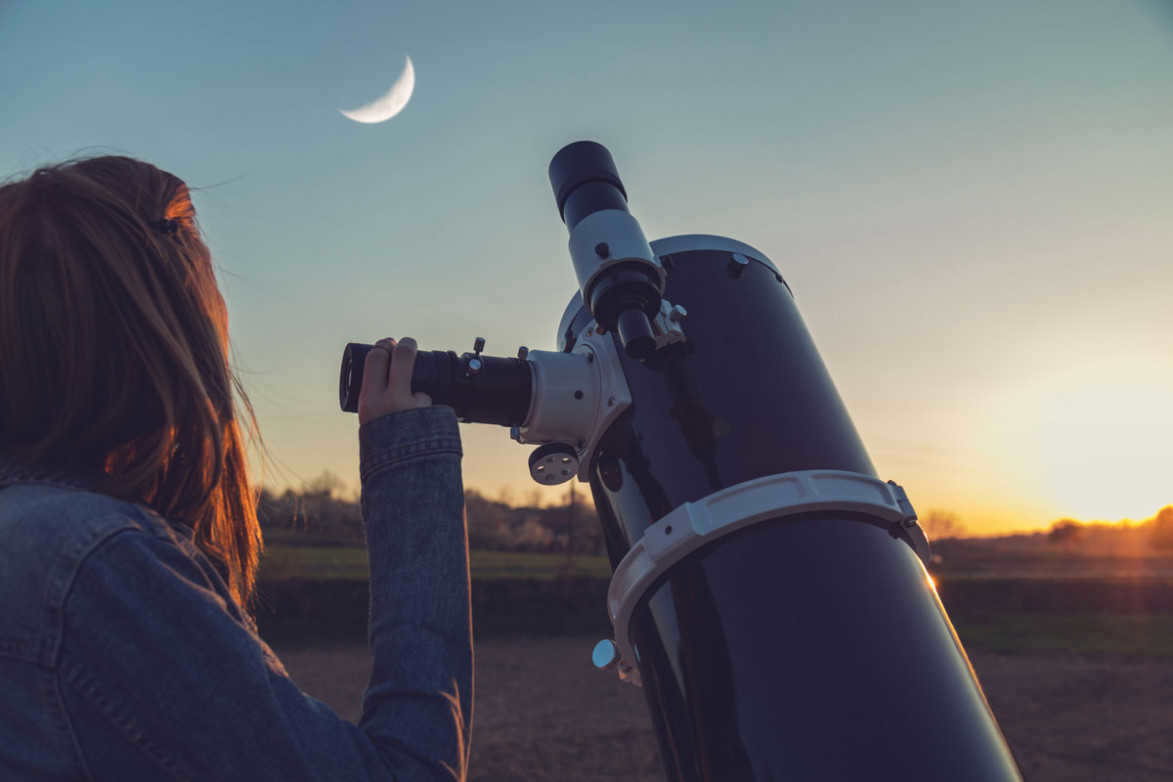

Is a telescope necessary?
While many people typically associate astronomy with using a telescope, it is not essential to immediately purchase one. It is advisable to first try observing the stars using a telescope or even a pair of binoculars. For beginners, binoculars can be sufficient as they are easier to adjust and aim. An ideal instrument for beginners would be binoculars with ten times magnification and an aperture of 50 millimeters, which determines the clarity of the image. Through such binoculars, one can observe fascinating objects such as lunar craters. Additionally, the Andromeda Galaxy and the rings of Saturn can also be observed, although they may appear slightly blurred.
If you’re interested in getting a telescope, it’s recommended to start with a refractor or refracting lens telescope. These types of telescopes require less maintenance and are more forgiving when it comes to sky illumination, which is often unavoidable in urban areas. As you gain more experience, you can consider switching to a reflector telescope, which allows for more advanced observations and reduces distortion.
Once you’ve developed a passion for astronomy, you can explore more advanced instruments. The prices of these instruments vary greatly and can even reach up to half a million rubles. According to Dmitry Suzan, a tutor in math, physics, and astronomy, there are even models available with automatic guidance.
Dmitry Suzan – Tutor in Math, Physics, and Astronomy
4,87 83
Start the survey
“Telescopes that are pricier, beginning at a thousand dollars, come equipped with computer connectivity. These models possess their very own star database, as well as deep-sky object information and a clock mechanism. Once properly adjusted and calibrated, the telescope is not only capable of locating your desired object, but it can also track and follow it as it moves.”
Where is the optimal location for stargazing?
If you’re looking to observe the night sky, you might attempt to do so from the rooftop of a city building. However, the presence of night lighting can be a hindrance. For the best experience, it is advisable to venture out to the countryside, where the absence of street lights creates more favorable conditions. To truly enhance your stargazing adventure, consider bringing a telescope along and embarking on a journey to Russia’s southern region, specifically the Caucasus. This area boasts a good astroclimate with numerous sunny days and clear nights, offering an even greater opportunity to marvel at the beauty of the starry sky.
According to Lev Kamentsev, the desert or mountains are the most idyllic locations for stargazing.
Observing thin objects, like faint comets, is impractical in urban areas. Why? Because there is light pollution in cities, as well as clouds and moisture. This, by the way, also affects the number of meteorites that can be seen. For instance, in the Leningrad region, the abundance of clouds makes it difficult to spot bright meteors, known as bolides. It would be better to travel to a desert location, such as the Sahara or the deserts of the Arabian Peninsula. Many telescopes are installed in the mountains of northeastern Chile, where there are almost 365 days of sunny weather, rare cloud cover, and a dry climate.
Lev Igorevich Kamentsev, a tutor in geography and astronomy
4,60 302
Open the survey
“Observing fine objects, like faint comets, in the city is impractical. This is due to the presence of light pollution, as well as cloudy and humid conditions. The impact of these factors can also be seen in the limited number of meteorites found. For instance, in the Leningrad region, the abundance of clouds makes it difficult to spot bright meteors, known as bolides. It is more advisable to venture into the desert, such as the Sahara or the deserts of the Arabian Peninsula. In the mountains of northeastern Chile, numerous telescopes have been installed. This area boasts almost 365 days of sunny weather, rare cloud coverage, and a dry climate.”
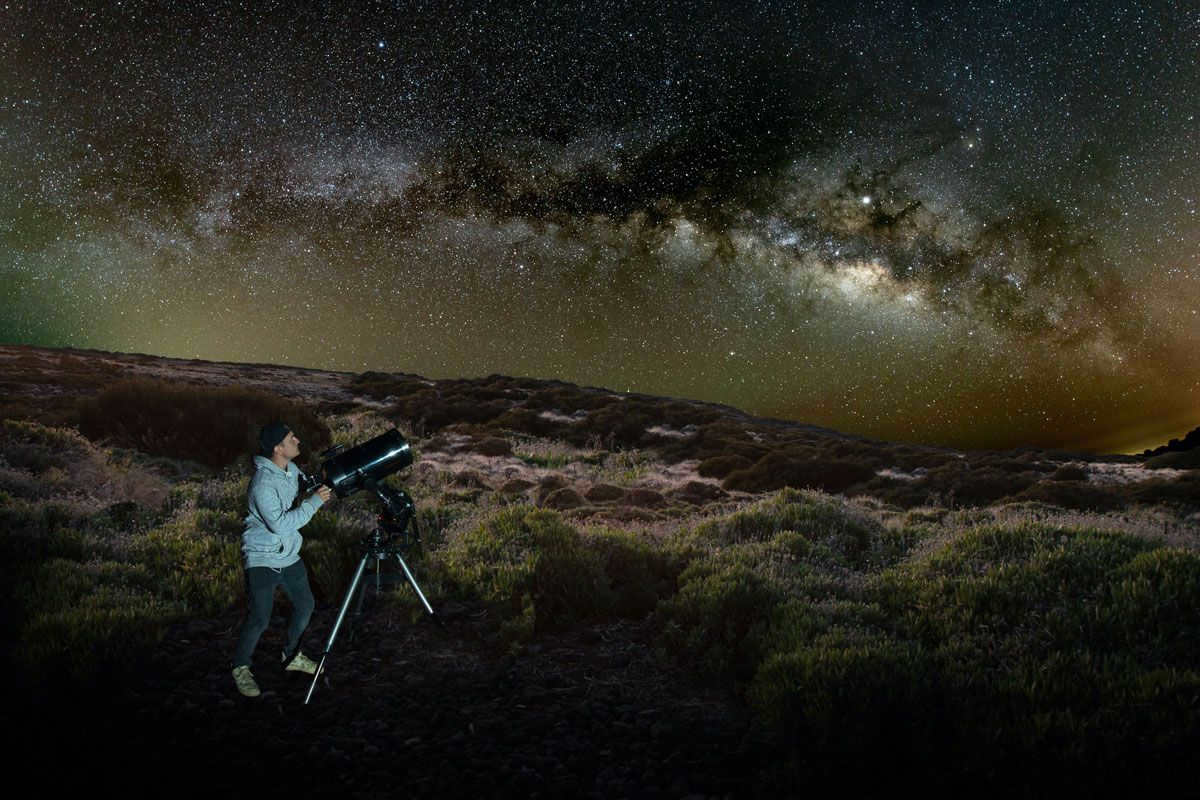
How to navigate the sky?
Once you have prepared your equipment and selected a location for observation, it is time to begin your celestial navigation. To aid in this, you can use a traditional star atlas that can be hung on the wall, allowing you to gradually familiarize yourself with the major constellations. If you are located in the Northern Hemisphere, this is where you should begin.
The prominent and easily identifiable constellations in the night sky will serve as reference points for locating less conspicuous objects. For instance, by drawing a diagonal line from the outermost stars of the “scoop” or handle of the Big Dipper, you can locate Polaris, which is always positioned above the northern point of the horizon.
Accomplishing tasks with the Pro
If this approach appears overly complex to you, there’s a handy trick – the Star Chart application – which enables you to navigate the celestial sphere using your mobile device.
What is observable in the nocturnal heavens?
In the grand scheme of the cosmos, not much, merely a small portion of our galaxy. Nevertheless, there are numerous intriguing sights to behold. From any bustling city, you can catch sight of the most brilliant stars, including Aldebaran, Vega, Sirius, as well as the nearest planets to Earth – Venus, Mars, Jupiter, Saturn. By the way, the planets are most effectively observed during opposition, when their proximity to us is minimal.
In addition, three prominent meteor showers – the Geminids, Perseids, and Quadrantids – are visible annually in the Northern Hemisphere. At the height of their activity, they resemble a powerful meteor storm.
One excellent assistant for this purpose is the Stellarium planetarium software. It can determine the positions of stars, planets, and constellations based on your current location, allowing you to observe the celestial objects that are visible in the sky at any given moment.
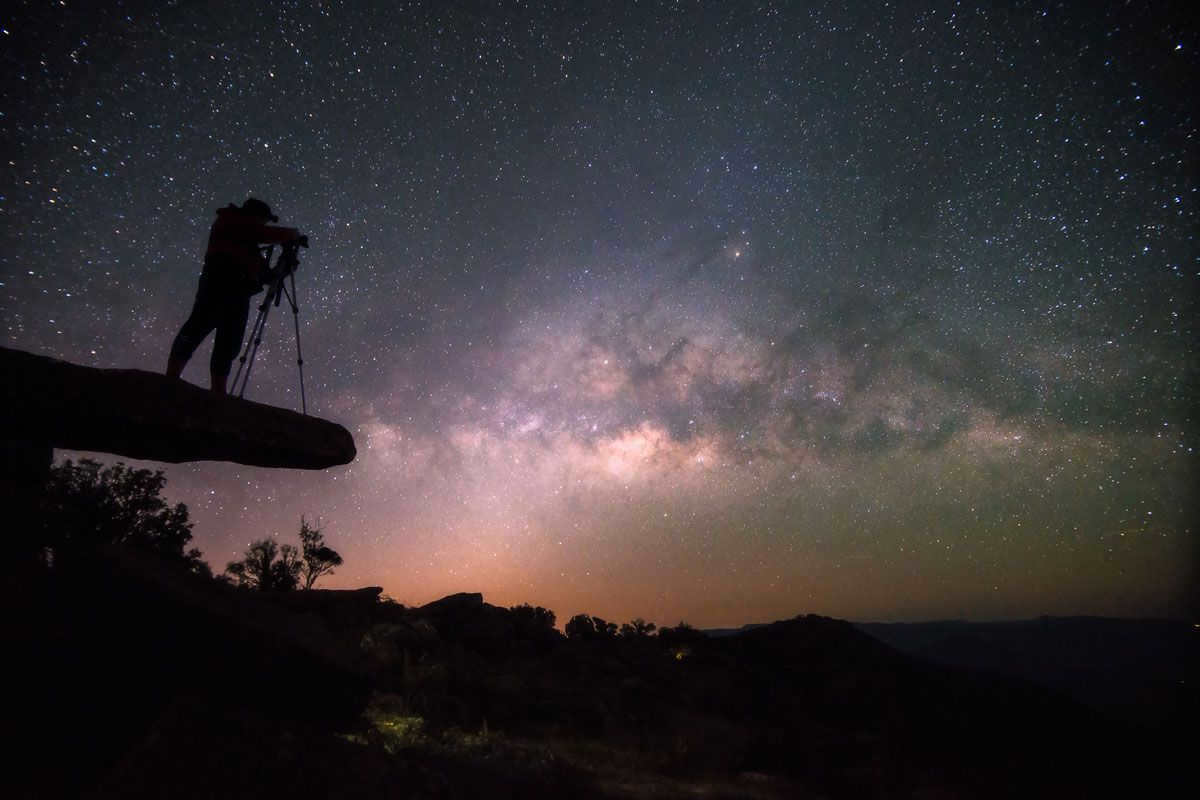
What are the methods and techniques for photographing the universe?
Astrophotography can be done with any camera that has a slow shutter speed and high light sensitivity, or ISO. Additionally, a fast lens that can gather sufficient light and a tripod are necessary to prevent camera shake and ensure clear images.
These images can be shared in specialized groups, such as “Astrophotography”, or one can participate in contests. Different organizations organize contests each year, but the most prestigious one, known as Astronomy Photographer of the Year, is held by the Royal Greenwich Observatory.
Exciting Activities to Enjoy
with the Experts.
Over 13 million businesses have already placed their trust in the professionals.
Discovering the Wonders of Astronomy
An aspiring astronomer doesn’t have to delve into a complex physics textbook. Engaging popular science books are sufficient to grasp the reasons behind a star’s brightness compared to another and comprehend the phenomenon of certain celestial objects moving while others remain stationary.
Dmitry Valerievich Suzan – Tutor specialising in Mathematics, Physics, and Astronomy
Rating: 4.87 out of 5
View full profile
“I suggest exploring Vorontsov and Veliaminov’s textbook, which was originally written during the Soviet era but has since been reissued to include new discoveries and the construction of new observatories. The book ‘What and how to observe in the sky’ by Tsesevich would also be of interest to students. Additionally, I recommend Dagaev’s ‘Observations of the starry sky’, Siegel’s ‘Treasures of the starry sky’, and Kulikovsky and Surdin’s ‘Handbook of amateur astronomy’.”
However, if you desire a more comprehensive understanding, I would recommend reading Zasov and Postnov’s ‘General Astrophysics’ or exploring other books listed on the website of the State Astronomical Institute at Moscow State University.
If you want to delve deeper into the subject, you can visit a planetarium. There, not only will you receive information about planets and stars, but you will also have the opportunity to embark on a virtual journey to these celestial bodies through dome projections. Alternatively, you can explore the realm of popular science by attending lectures at museums or by accessing online platforms such as YouTube, where excellent Russian materials can be found on the PostNauka channel.
To stay updated with the latest scientific developments, you can follow popular science portals or tune in to podcasts like Planetary Radio, although proficiency in English is required for the latter.
If you are interested in studying and downloading a presentation on the fascinating topic of The Far Depths of the Universe, you can access a comprehensive slideshow consisting of 12 slides. Utilize the embedded player to view the presentation, and if you find the material beneficial, feel free to share it with your friends using the provided social buttons. Don’t forget to bookmark our presentation site for future reference!


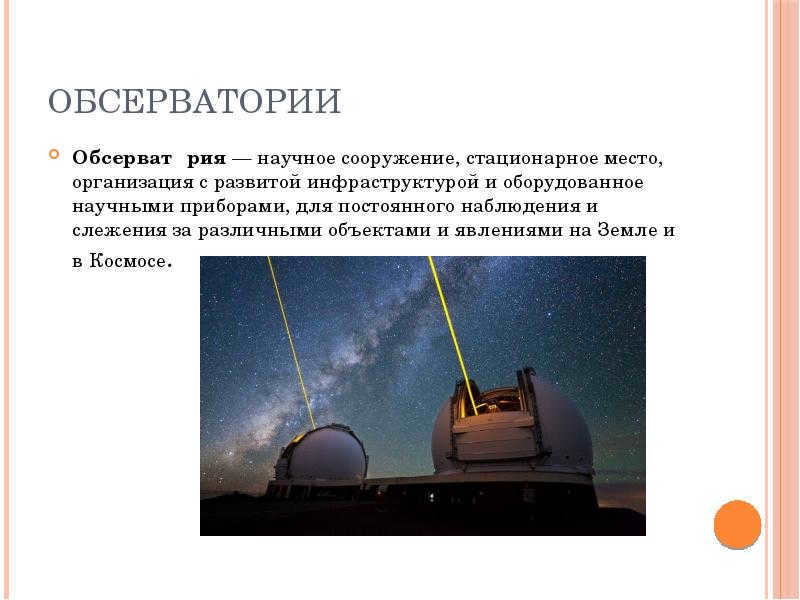
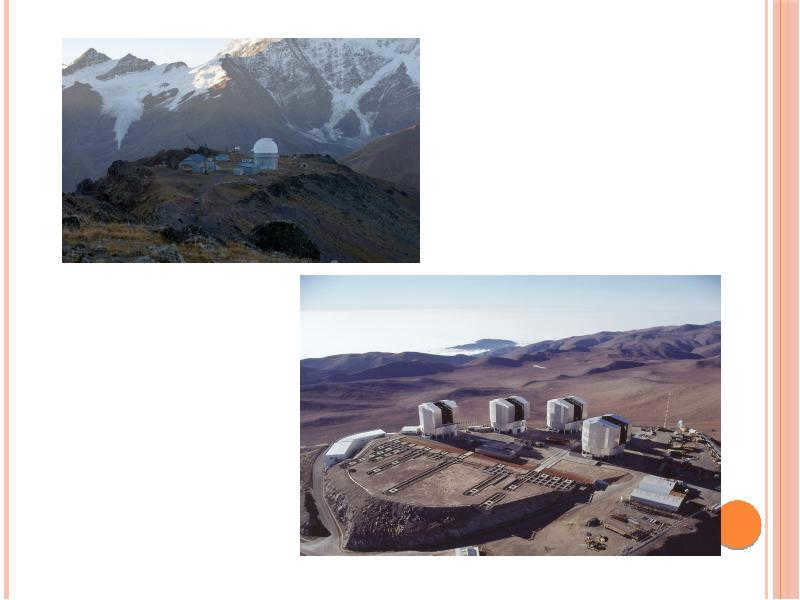

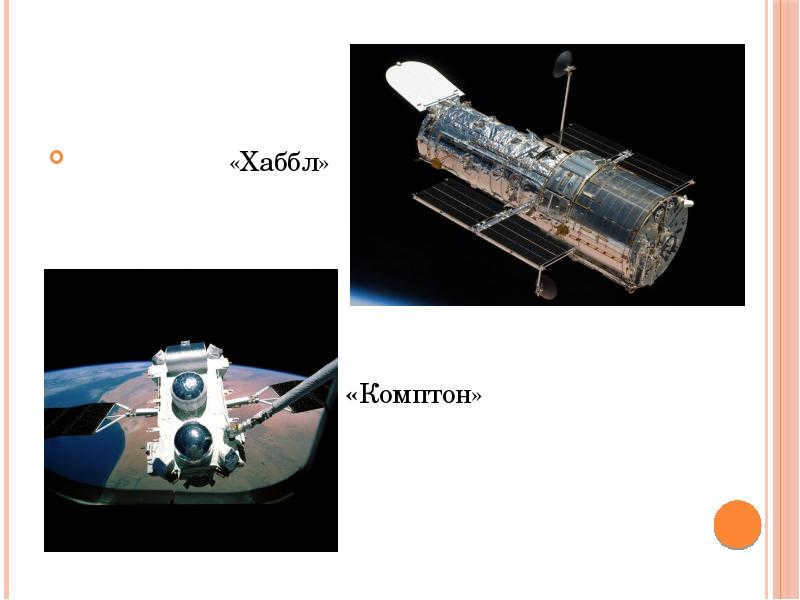
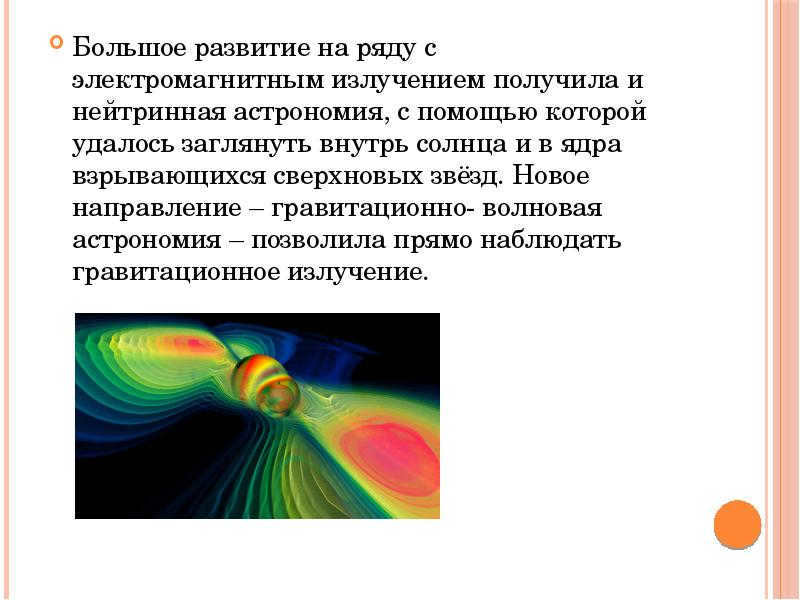
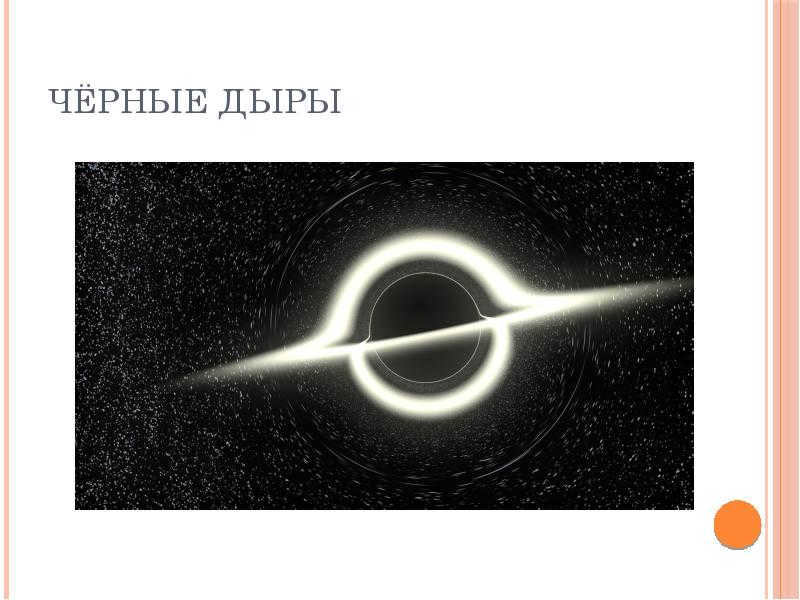
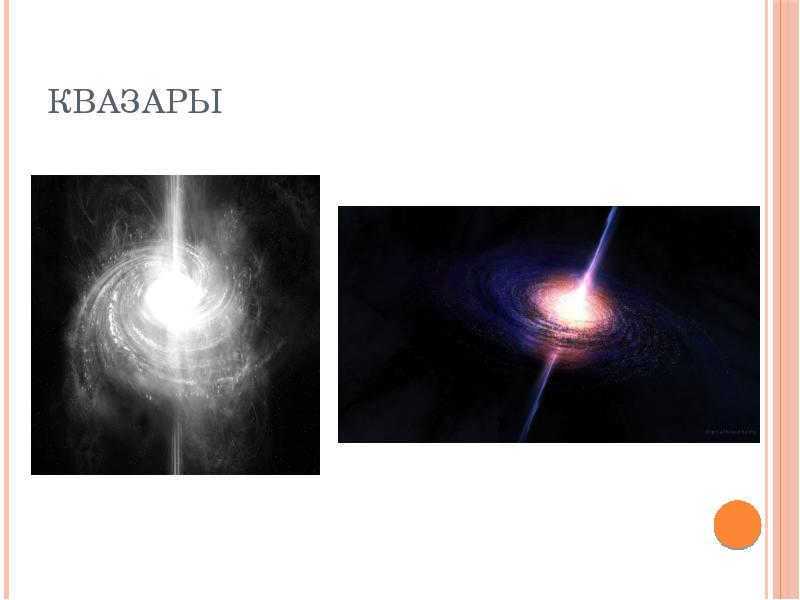
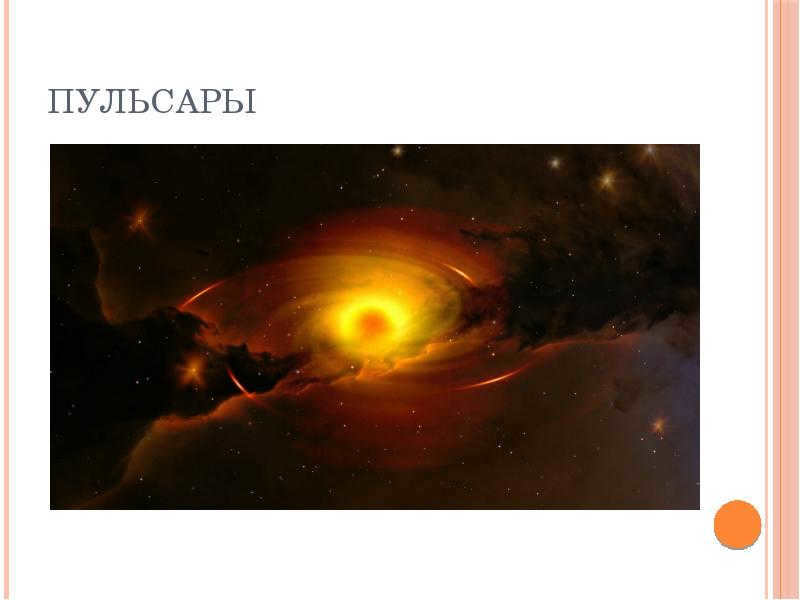
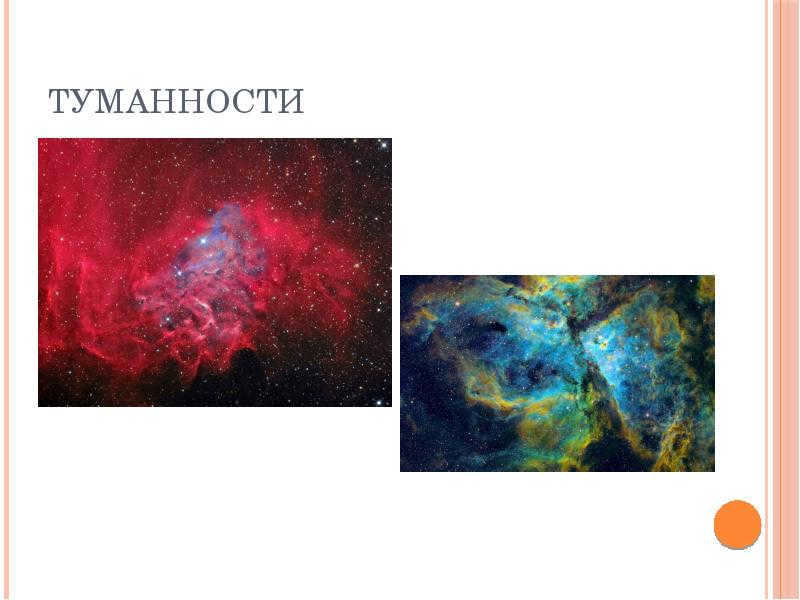

An observatory is a scientific building, a fixed location, an organization with well-developed infrastructure, and equipped with scientific instruments for continuous observation and monitoring of various objects and phenomena on Earth and in Space.
Space telescopes, on the other hand, are astronomical observatories situated in space. These telescopes are categorized based on their primary frequency ranges: Gamma rays, X-rays, Ultraviolet radiation, Visible radiation, Infrared radiation, Microwave radiation, and Radio radiation. Additionally, there are also particle detectors.
Significant advancements have been made in the fields of electromagnetic radiation and neutrino astronomy, which have allowed scientists to peer inside the sun and the cores of exploding supernovae stars. Another emerging field, gravitational wave astronomy, has enabled direct observation of gravitational radiation.
194922 194949 194932 194951 194907 194943 194911 194935 194929 194906 194945 194947 194923 194948 194910 194912 194934 194918 194940 194936 194913 194950 194933 194942 194909 194930 194944 194919 194946 194941
Send the presentation via email
Feedback
If you are unable to locate and download the report-presentation, you can request it on our website. We will make an effort to locate the material you require and send it to you via email. Do not hesitate to reach out to us if you have any inquiries or requests:
Feel free to get in touch with us if you have any questions or requests:





